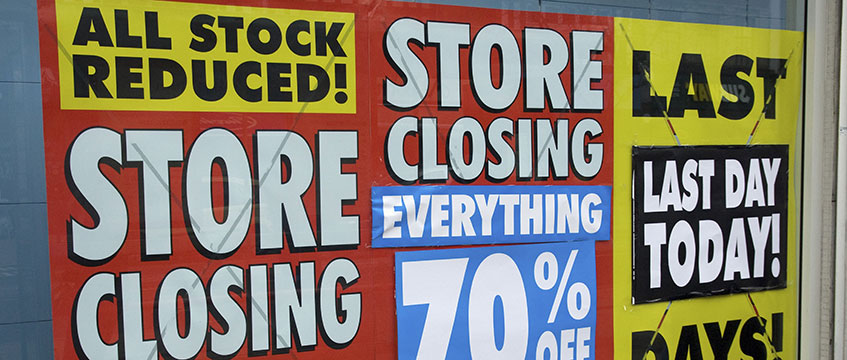The number of shops closing has hit its lowest point in four years, signalling that the retail and leisure market is stabilising after a period of pandemic-driven disruption.
Store closures fell to 24,832 in H1 this year, from 26,703 in H1 2021, according to a new report from the Local Data Company.
There was a net decrease of 923 retail and leisure locations in H1 this year, reflecting the best result recorded since H1 2017.
Researchers said the findings suggest market activity has “well and truly resumed following the pandemic, and the sector is in a strong position despite looming challenges”.
Retail chains posted year-on-year improvement, with 2,993 fewer closures than in H1 last year. LDC noted that although those retailers suffered a net decline of 2,258 locations year-on-year, most of the major closures “seem to be over” and the gap is narrowing between chains and independents.
Independents continued to thrive, with a net increase of 1,335 stores during the first half, up from an equivalent of 804 in H1 2021. The report said the trend for shopping locally has continued following the lockdowns, benefiting independent retailers such as convenience stores. However, it warned that rising operational costs could dent independents in the second half.
Vacancies fell at shopping centres, with the net change in stores falling by 0.3% in H1 2022, compared with a 3.3% decline year-on-year.
The leisure vacancy rate has edged down by 0.4% over the first six months of the year. Independent hospitality was highlighted as a standout performer, particularly fast-food takeaways, independent cafés and new bar concepts, with empty premises presenting opportunities for market newcomers.
LDC said the market has landed in a much stronger position than expected, but warned of a “difficult end to the year” for occupiers and investors that will stretch into 2023.
Lucy Stainton, commercial director at the Local Data Company, said: “Our latest analysis of the physical retail and leisure market shows a remarkable level of recovery at a time when further economic headwinds have been well-documented.
“With store closures decreasing compared with the same time last year, in parallel with an increase in openings, the net decline in trading retail and hospitality businesses has softened significantly. The pandemic proved the final straw for a number of ailing retailers, and this CVA and insolvency activity, which typified the most challenged end of the market during the Covid years, has now seemingly washed through.
“Independents in particular have continued to flourish as consumers remain loyal to their local high streets. However, we can’t be naive to oncoming economic pressures as consumers face a winter with less disposable income and increased caution. It feels that just as the market has started to find its feet, we are now about to face a new round of tests – but perhaps the lessons learned during the pandemic will prove fundamental to both chains and independents in enduring these too.”
To send feedback, e-mail pui-guan.man@eg.co.uk or tweet @PuiGuanM or @EGPropertyNews
Discover which agents have been most active in the regional retail markets so far this year >>











